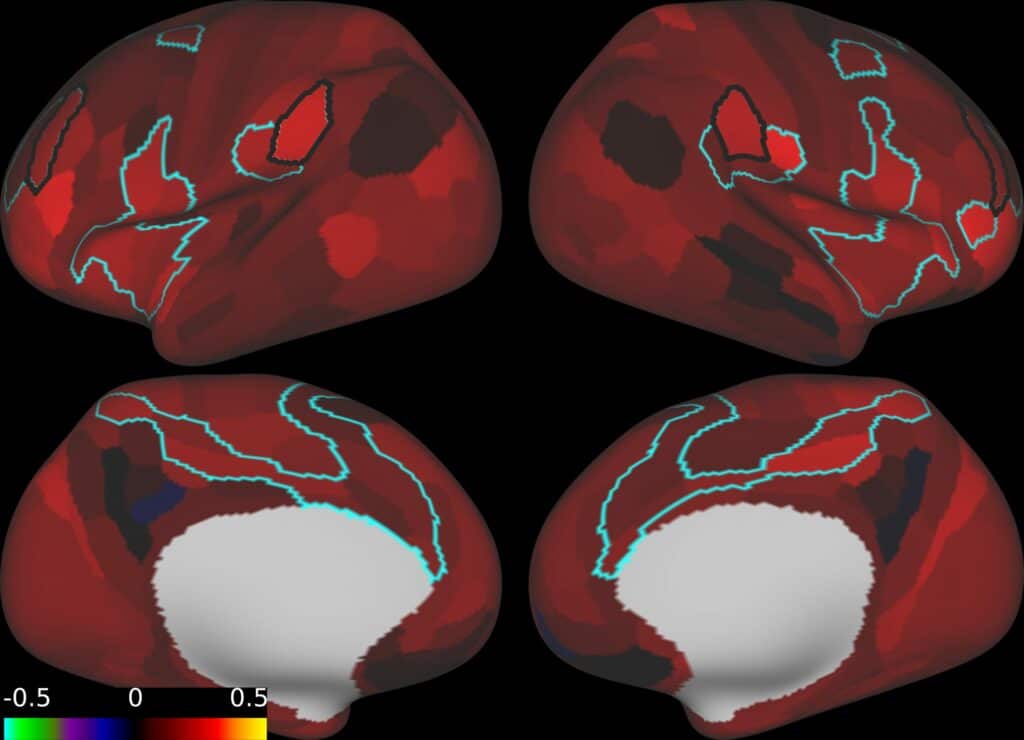
Contact Us

Now, let’s take a look at what happens after the first 3 years of life. Let’s talk about what happens when some of those essential neural connections are damaged or broken.
Think of brain development as a wiring process. Imagine a circuit board where connections between neurons are made and fine-tuned. The connections we use regularly usually become stronger and more complex. But neglected connections are eliminated over time and cause problems.
In fact, many psychiatric disorders affect the connectivity of some very important brain networks. Involving impaired connections across or within networks.

Healthy neural connections serve as the foundation for brain function, enabling different regions to work together to process information, regulate emotions, and control movement.
When these connections are weakened or disrupted, communication between brain regions becomes inefficient, leading to a range of cognitive and behavioral challenges.
Identifying and addressing impaired neural connections early can help prevent long-term neurological decline and improve overall brain health.
Symptoms vary based on the affected brain regions but may include:
Neural connectivity can be disrupted by various factors, from genetics to environmental influences. These causes can lead to imbalances in brain function, affecting mental, emotional, and physical well-being.
Some of the most common causes include:
Healthy neural pathways act as communication highways, allowing different parts of the brain to coordinate and function seamlessly. When connectivity is impaired, brain regions become isolated, leading to a variety of cognitive and motor issues.
Traditional treatments for impaired neural connections often focus on managing symptoms rather than addressing the root cause.
At Neurotherapeutix, we use fMRI-guided TMS therapy, a groundbreaking treatment that enhances neuroplasticity and strengthens communication between brain regions.
If you or a loved one are experiencing cognitive, emotional, or physical challenges related to impaired neural connectivity, Neurotherapeutix is here to help.
Our team specializes in fMRI-guided TMS therapy, providing personalized treatment plans designed to enhance brain function and improve quality of life.
Seeking early treatment can significantly affect long-term brain health and daily functioning.
There’s no need to let impaired neural connections prevent you from reaching your full potential. Instead, take the first step toward better neural connectivity by requesting an appointment or contacting us today.

Call us at (917) 388-3090 or click to request a regular or telehealth appointment.
Neurotherapeutix
171 East 74th Street, Unit 1-1 New York, NY 10021

Neurotherapeutix is the leading clinic for functional imaging guided transcranial magnetic stimulation (TMS), a safe, innovative, and non-invasive methodology for treating a wide range of acute and chronic mental disorders and brain injuries. Our advanced fMRI technology allows us to map the brain for the… Learn More »
By: Neurotherapeutix NYC
Reviewed By: Marta Moreno, Ph.D
Published: March 24, 2023
Last Reviewed: September 27, 2024
QUICK INQUIRY
Contact us to get an estimate for your medical services requirements. You can fill in the form to specify your medical requirements or you can call us directly.